Been cleaning up all the bull-shit trolls that creep in my lesser-policed feeds. Same MO though. Almost all are first-timers, with join dates five or more years ago. All are not active anywhere else. Just land on MM, and shit on it.
I do a purge. Erase, block, and delete.
Move on to the next. Ugh. What a pain in the ass.
♫WE ARE The 2000’s♫ (Mashup By Blanter Co)
How can the U.S. counter BRICS?
BRICS is based on China’s huge infrastructure projects for last 30yrs and something that the USA cannot do unless it completely remodel itself as an economy that relies on the real economy, ie infrastructure and manufacturing. And cuts current reliance on military production, Tbills/usd printing and Wall St finance that creates wealth from trading equities. Highly difficulty given the laws and structure of the USA, and the West are already skewed to compete in those industries.
By end 2000s, Chinese construction companies had nearly completed China’s massive infrastructure building program and had huge amounts of surplus infrastructure building capacities and expertise. At the same time, Chinese economy needed lots of resources to fuel growth and Chinese trade surpluses accumulated so much capital, they needed to recycle the capital. Xi’s team realised that the clever way to solve all these problems were to build infrastructure along the ancient Silk Road. And it resonated with countries in those lands because they needed the capital and infrastructure to fuel their own growth and ship their produce to China and the world to better the lives of their people.
The way the scheme works, these countries proposes their own infrastructure needs to China and its companies, and they work out the feasibility of these projects based on the resources and produce that can be sold to ultimately fund these projects. If corruption does not interfere, the process should be sensible and feasible. This is actually a simple HP contract with China providing the capital and infrastructure, and getting paid over time with goods and resources sold by client countries. There is good economic logic to the whole process. Of course, there will be ruffians that will try to profit from corruption but by and large, the projects do increase trade in the entire BRI belt.
China BRI trade with 140 countries tops $9.2 trillion China’s Belt and Road Initiative is “a public road open to all” and is not “ideologically biased” according to Chinese Foreign Minister Wang Yi, addressing a conference on future plans for the programme. Wang was speaking at the Asia and Pacific High Level Video Conference on Belt and Road, which took place on June 23. He gave an update on China’s Belt and Road Initiative and called on nations to join and support the use of the BRI as a superhighway for vaccine roll-outs, sustainable development and building digital connectivity. According to a statement by China’s Ministry of Foreign Affairs of the People’s Republic of China, political leaders from 29 countries, including Colombian President Iván Duque Márquez, were present via video-link. The conference was organised to “enhance anti-pandemic cooperation and boost economic recovery”. 140 partner countries Wang said that from its inception in 2013, the “important initiative” has shown strong vigour and vitality. “Over the past eight years, the BRI has evolved from a concept and vision into real actions and reality, and brought about enormous opportunities and benefits to countries around the world. To date, up to 140 partner countries have signed documents on Belt and Road cooperation with China. Trade between China and BRI partners has exceeded $9.2 trillion. Direct investment by Chinese companies in countries along the Belt and Road has surpassed $130 billion. The BRI has truly become the world’s broadest-based and largest platform for international cooperation.” Wang Yi added that even through the COVID-19 outbreak , Belt and Road cooperation did not come to a halt. “It braved the headwinds and continued to move forward, showing remarkable resilience and vitality. Together, we have put up an international firewall of cooperation against COVID-19, provided a stabiliser for the world economy, and built new bridges for global connectivity.” This “fruitful” Belt and Road cooperation was as a result of the solidarity and cooperation among BRI partners, guided by the principle of extensive consultation, joint contribution and shared benefits, he said, adding that BRI practices the concept of open, green and clean development, aimed at high-standard, people-centred and sustainable growth. “All cooperation partners, regardless of economic size, are equal members of the BRI family. None of our cooperation programs are attached with political strings. We never impose our will on others from a so-called position of strength. Neither do we pose a threat to any country. “We are always committed to mutual benefit and win-win. The BRI came from China, but it creates opportunities and good results for all countries, and benefits the whole world. We have strengthened policy, infrastructure, trade, financial and people-to-people connectivity to pursue economic integration, achieve interconnected development, and deliver benefits to all. “The BRI is a public road open to all, and has no backyard or high walls.
As the countries trade and projects grew, these BRI trade and projects are now defining China’s role with the rest of the world. And they are now a principle reason China can afford to reduce reliance on West markets.
And as these countries grow their capital, China is now encouraging them to use rmb and bilateral currencies to trade, and this will further erode the powers of the West’s financial systems. In fact, the more the West struggles to smear it and to attack it, the more these countries will wean themselves away from the euro/usd world and move the world towards a multi currency system.
West has no ability to propose alternatives because they do not have the massive infrastructural capacity and expertise of China at this point. And years of backing US wars and the 2008 Wall Street subprime collapse have also weaken US/EU financial systems and govt debts to point they have not much capital to spare on building the developing world’s infrastructure. The world knows that USA is fully reliant on the usd reserves status to print endless amounts of Tbills/usd to sustain only.
EU should adopt a different strategy from US, Chinese infrastructural capacity and expertise will be boosted if they join these projects, and China will gladly welcome them to boost growth of markets everywhere.
After all, these roads, rails and ports link up the great EurAsia Africa continents and can be one super economic massive continental group.
Even the USA can benefit if they drop an aggressive US hegemonic model that benefits only the US MIC billionaires.
A super huge market can drive many US companies too. So silly to cling onto a model that relies on endless wars, endless arms sales, endless printing of Tbills that is actually robbing monies from American taxpayers to pay US MIC billionaires.
Blinken, rogue and ignored
- China is refusing to let US secretary of state Antony Blinken visit Beijing
- Four people familiar with the negotiations said China had told the US it was not prepared to reschedule a trip that Blinken cancelled in February
- countries of the world are sick of the continuous toxic diatribe, lies and lectures spew by the Americans
- In this case, China was concerned that the FBI would deliberately release manufactured lies regarding the results of an investigation into the downed suspected Chinese “spy balloon”.
This Is How They’re Going To CONTROL You!
Neua Yang (Charcoal Broiled Beef
in a Hot/Sweet Sauce – Thai)
Yang dishes are the Thai equivalent of Thai barbecue food. The most common is undoubtedly kai yang (chicken) where a chicken is split open, beaten flat, and gripped in a cleft stick to grill over the brazier.

This version – neua yang or barbecued beef – has a more assertive sauce to go with the stronger flavor of the beef. It is best accompanied with a bottle of strong beer, especially when eaten as lunch during a break from working in the paddy fields. At dinner a good Italian red wine is I think the best choice.
And of course if you don’t have a charcoal brazier, or the weather is a shade cooler than here (it’s 38 degrees C (100 degrees F) outside as I type this…) then you could just as easily prepare this dish on a griddle or broil it in the oven (but it *does* taste best if it can absorb the flavor of the charcoal smoke).
For an evening meal I would suggest serving it with a salad such as the yam polamai (that I will post next), and a soup such as tam kha kai (chicken soup with a coconut milk stock).
Ingredients
Sauce
- 1 tablespoon lime juice
- 1 tablespoon fish sauce
- 1 tablespoon dark sweet soy sauce
- 3 tablespoons shallots (purple onions), sliced very thinly
- 1/2 tablespoon palm sugar (or honey)
- 1/2 tablespoon prik phom (powdered dried red chiles)
- 1 tablespoon sliced spring onion/scallion/green onion, including tops
- 1 teaspoon bai chi (coriander/cilantro leaf), chopped
Instructions
- First prepare a serving platter, lined with lettuce leaves, and decorated with sliced cucumber.
- Combine the ingredients to make the sauce. taste and if required add extra sugar/honey, lime juice and/or prik phom.
- Barbecue half a pound of steak to whatever “doneness” you prefer, then slice into slices an eighth of an inch thick, and then cut the slices into bite sized pieces. Place on the lettuce, and pour the sauce over the steak.
- Accompany with the usual Thai table condiments (prik phom, sugar, and prik dong (red chiles in vinegar)).
You can substitute sautéed onion for the shallots if they are unavailable.
Also, remember when using prik phom (and sugar) in sauce preparation that the diners can always add more at the table, but they can’t remove it if you put too much in!
Served as a one-plate dinner, this serves one fairly hungry diner, but with the soup and salad should be adequate for four people.
US March Toward War – Ukraine Offensive, War Over Taiwan (w/Danny Haiphong)
The world needs more diplomats like Russia's Sergey Larov and China's Wang Yi. not American "diplomats" (if they can even be called such) like Jake Sullivan, Anthony Blinken, John Kirby, etc.
Anonymous Artist Is Photoshopping Kids Books, And The Result Is Hilarious

Mark March 11th on your calendar, for it is a day that will go down in history as the founding date of Paperback Paradise, “The world’s #1 used book store.” After the Berenst(E)ain Bears Conspiracy of 2015, it should come as no surprise that many of the books that you read in your childhood are not as you remember them. In particular, that their titles are radically different.
h/t: boredpanda









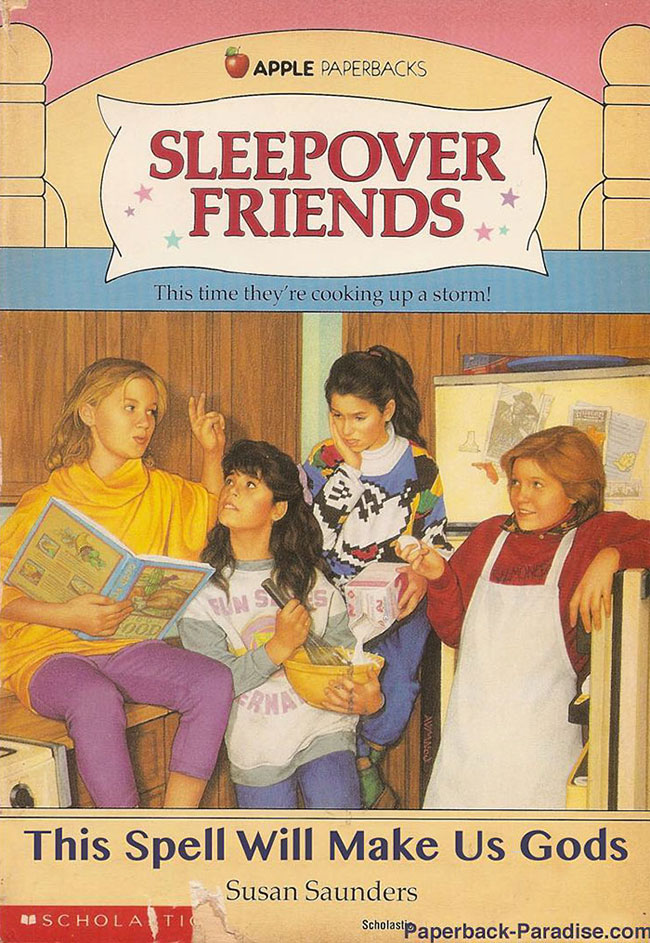























Renzo Gracie, a Brazilian jujitsu fighter, was in a New York underground station, accompanied by a friend after training at the gym. The two were speaking in Portuguese.
Suddenly, an American approached shouting ‘Speak English here! ‘ and pushed his way towards the duo. Not knowing that he was attacking a professional wrestler, the man was choked and restrained until he apologised.
The case is reverberating internationally and Renzo has already given his opinion: ‘There was no fight… an educational moment’.

2023.04.16 Poisoning The Well
The "people of the ziggurat."
ABC Television Guest: “Can’t see the difference between the Christian Right and the Taliban”
ABC Television in the United States has a show called “The View” wherein ignorant, kackling, women say really stupid things. Most recently, guest Patti LuPone said “I don’t know what the difference between our Christian Right and the Taliban is.”
She went on to say “What’s happening in this country right now in the name of religion is just so dangerous.”
What is she talking about?
Is it Abortion?
Killing babies inside their mother’s womb is somehow “good?” Stopping that is somehow “bad?”
As to the difference between the Christian Right and the Taliban, we in the Christian Right aren’t cutting people’s heads off. That’s kind of a major difference, but what do I know . . .
Where does ABC Television come up with people like this whose opinions are shear idiocy?
Yet, THIS is what’s on American TV:
This is yet another example of why people must beware what they see and hear on TV. The people you are seeing and hearing may very well be actual idiots!
Portugal tells the U.S. to STAY OUT of its business with China
Green Curry Beef
If you’ve never cooked Thai before, start with this one. It introduces you to many ingredients and flavors at once, is spicy but not too fiery, and is simple to make. Look for the best quality commercial curry paste you can. The first time you make this dish, start with half the curry paste and taste after combining with the coconut milk; you can increase the intensity at this point if desired. Be sure to use unsweetened coconut milk.

Ingredients
- 1 pound (450 g) lean beef steak
- 2 tablespoons (25 mL) peanut oil
- 3 tablespoons (50 mL) green curry paste, or to taste
- 1 (14 ounce) (400 mL) can coconut milk
- 4 fresh red chile peppers, seeded, ribbed and sliced
- 3 tablespoons (50 mL) fish sauce or soy sauce
- 2 teaspoons (10 mL) salt
- 1 tablespoon (15 mL) granulated sugar
- 4 lime leaves
- 2 cups (500 mL) chicken stock, preferably homemade
- 2 green onions, sliced
- Handful of fresh basil leaves
Instructions
- Cut the beef into thin slices about two inches long (you may want to partially freeze the beef to make cutting easier). Set aside.
- Heat a wok or large skillet until hot. Add the oil, and when hot stir in the curry paste. Stir fry for 30 seconds.
- Drizzle in the coconut milk, stirring constantly.
- Add the sliced chiles, fish sauce, salt, sugar, lime leaves and stock. Bring to a boil.
- Add the beef slices and green onions. Turn the heat to low and simmer the dish uncovered for 15 minutes until the beef is tender and the sauce slightly thickened.
- Stir in the basil leaves and cook until wilted.
- Serve at once with plain steamed rice.
Top 70 Songs of 1978
https://youtu.be/-wy8wKwd6FI
The majority of Australians prefer a policy of neutrality and oppose joining US wars under the ANZUS alliance, polling shows.
by Peter Cronau
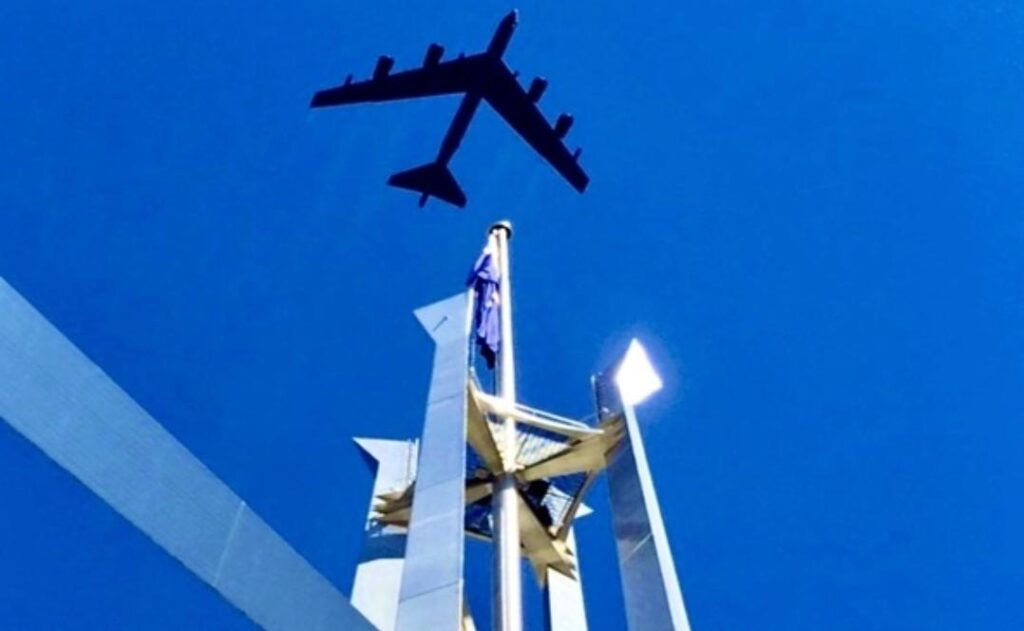
A US Air Force B-52 nuclear bomber flies over Canberra’s parliament house in a fly past that seemed, to some at least, to be a darkly ominous message about who holds deep power in the nation’s capital. Media at the time referred to it as ‘a symbol of the enduring friendship between Australia and the United States of America’. (Photo: Supplied.)
Amajority of Australians want Australia to adopt a policy of neutrality when it comes to considering a US war against China, according to the latest polling
by the Lowy Institute think tank.
The poll, conducted in 2022, found 51% of Australians said they’d prefer Australia to remain ‘neutral’ in any US military conflict with China over Taiwan, down from 57% in 2020. [Fig: 1]
This runs so contrary to mainstream media representations of such polling that it’s worth stating again: The majority of Australians (51%) say they want Australia to maintain ‘neutrality’ in any US military conflict with China over Taiwan.
This remarkable finding reinforces earlier polling
by the Lowy Institute that found most Australians, while happy to support our military involvement in humanitarian interventions or peacekeeping, do not want the country to ‘support US military action’ in a war against China – and the number of Australians saying this is increasing
each year polled (2020 63%, up from 2013 60%). [Fig: 2]
At a time of hysterical pro-war reporting in many of Australia’s major mainstream news outlets
, the views of the Australian public against the US alliance and the US push for confrontation with China, should gain some higher prominence; if our media was interested in balance. Media’s ignoring the majority view is undemocratic and not in Australia’s national interest.
Support for a US war with China low
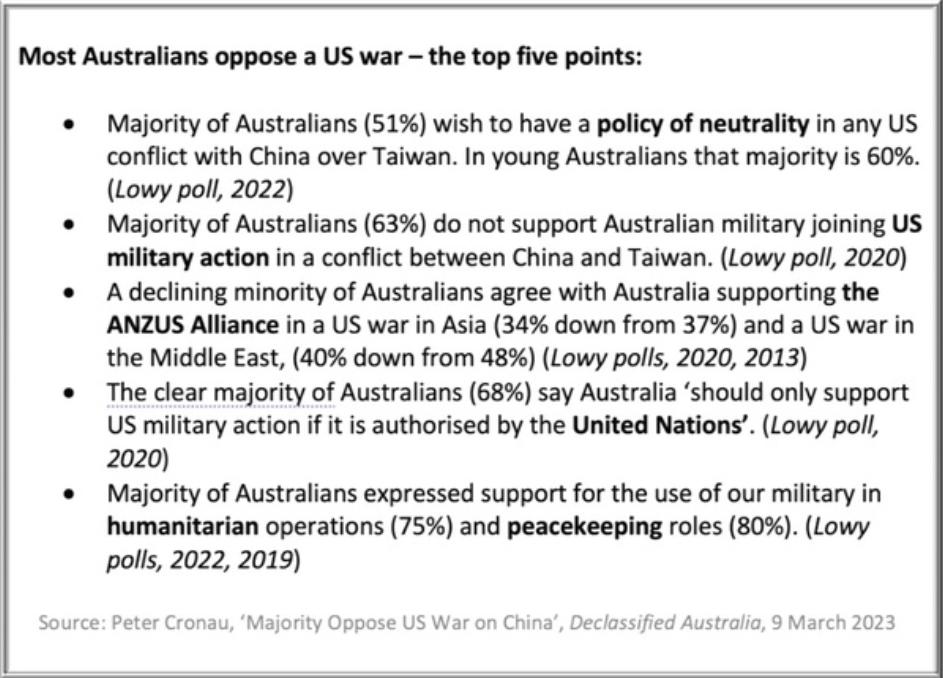
The earlier poll conducted in 2020 found 63% of Australians do not support Australian military joining US military action in a conflict between China and Taiwan. The opposition to US military action against China has increased
] by 9% from 2019, when 54% were against such military action.
Since that remarkable result, Lowy Institute changed the polling question slightly in 2021 and 2022, but despite that they still found that most Australians want the country to remain neutral in any US military conflict with China over Taiwan.
Elsewhere the report asked a separate
different question about if China ‘invaded Taiwan’. This saw Australian opposition to sending military forces that was at a majority of 54% in 2019, dropping to 47% in 2022. This near repetition of an earlier question in the same poll may seem odd, but it may be a case of asking varying versions of a question until finding the ‘right’ answer.
The Lowy pollsters seem to talk down the notable result on neutrality when they state
: ‘A bare majority say Australia should remain neutral… almost half say Australia should support the US in this conflict.’ The last time I looked, a majority is still a majority in most democracies.
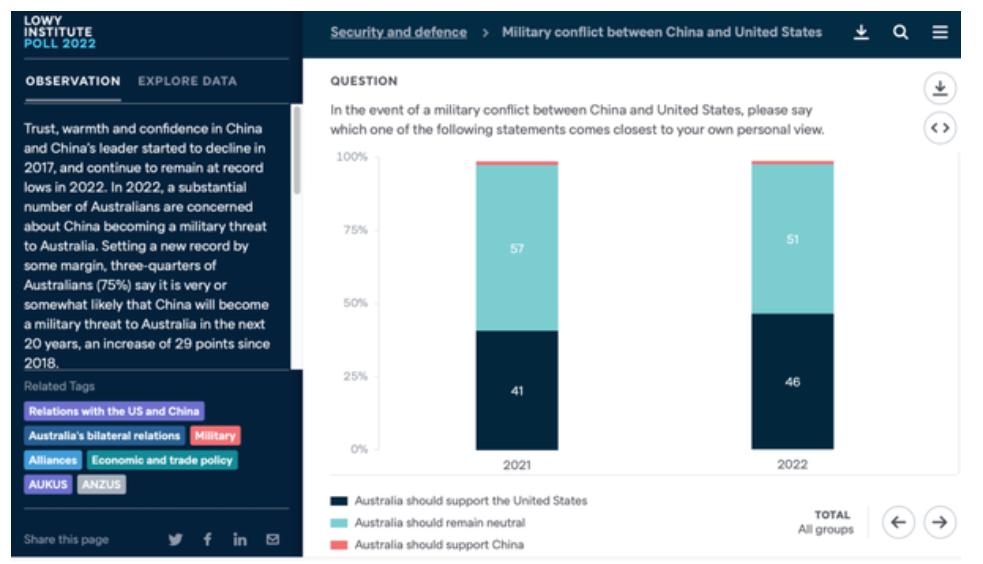
Figure 1: The 2022 Lowy Institute Poll has shown what Australians think of prospects of war between US and China:
Australians want a policy of neutrality. (Image: Lowy Institute)
What is fundamentally clear from this polling, however, is that in most polling the majority of the Australian public has made it known they do not want Australia to join a US war against China over Taiwan.
Support for ANZUS Alliance low
Australian ‘support’ for joining the US in any conflict under the ANZUS military alliance is also waning, the 2020 Lowy polling
also shows. [Fig: 2]
A minority (40%) of Australians in 2020 agree with Australia supporting the US under the ANZUS alliance in a war in the Middle East, a reduction from 2013 when 48% supported such action under the Alliance. And that prior to the debacle in Afghanistan, the Taliban’s victory and Australia’s hasty retreat in 2021.
Even fewer Australians support Alliance action in our own region. In 2020 a smaller minority of just 34% of Australians agree with supporting the US under the ANZUS alliance in a war in Asia, a decrease from 2013 when 37% supported it.
The clear majority of Australians (68%) in 2020 say Australia ‘should only support US military action if it is authorised by the United Nations’.
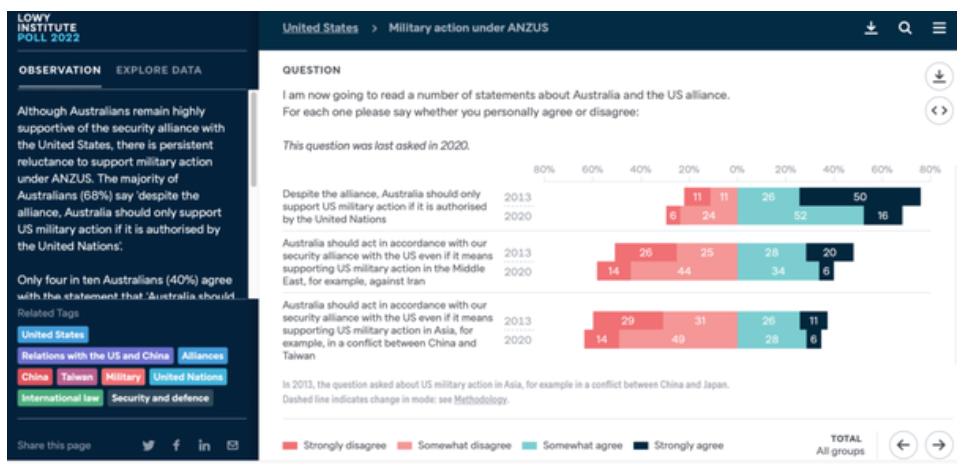
Figure 2: The 2022 Lowy Institute Poll has shown what Australians think of prospects of military action under ANZUS:
Australians don’t want to be a part of it. (Image: Lowy Institute)
However, with all statistics, it depends on what questions are asked, and what answers are publicised. The Lowy report emphasises an obvious truism when it asks a different question
in the 2022 poll, showing a majority of Australians generally consider the US alliance as ‘important’.
This ‘motherhood’ question allows pro-war media to shout: ‘Most Australians say Alliance is important.’ But while they may say it’s important, Australians don’t actually support it being used for Australia to join US wars.
The 2020 Lowy report very clearly states
: ‘There is persistent reluctance to support military action under ANZUS. The majority of Australians (68% ) say “despite the alliance, Australia should only support US military action if it is authorised by the United Nations”.’
Clearly most Australians would rather support the UN-based ‘international legal order’, than the US-designed ‘rules-based order’.
Other polling
supports this finding. A 2022 poll by the US Studies Centre shows that a large majority of Australians (76%) believe Australia should ‘develop a foreign policy that was independent of the global powers’.
Most say a US China war not in national interest
A further question in the Lowy poll shows that Australians, despite their antiwar majority, do well understand the current state of Australian democracy. They know that their wishes face headwinds in being translated into actual policy, and that, as with the Iraq war, it is probable they will be ignored and be dragged against their will into the next conflict.
The 2022 polling analysis shows
77%, the large majority of Australians, acknowledge the grim fact that ‘Australia’s alliance with the United States makes it more likely Australia will be drawn
into a war in Asia that would not be in Australia’s interests’.
They call it democracy but know they have little input to any decision to commit the nation to war. That’s because the decision lays solely in the hands of the Prime Minister of the day, not in the elected parliament. A majority
of Australians would like to see that changed too.
The sceptical public has decided. After 20 years of illegal and failed wars led by the United States, Australians are increasingly making it clear they have had enough. The collapse of all the dubious rationales for war have been noted by most of the population.

An estimated 240,000 were killed during the 20-year failed allied occupation of Afghanistan – most of them Afghan citizens. Here the body of one Australian soldier, Sgt Blaine Diddams of SASR, is returned home to his family and friends waiting at RAAF Base Pearce, Western Australia, on 9 July 2012, after being killed in a clash the Chorah region of Uruzgan Province, Afghanistan. (Photo: Cpl Chris Moore, Department of Defence)
Australians have seen through the lies over the non-existent Iraqi ‘weapons of mass destruction’, the dismal failure of the ‘nation building’ experiment in Afghanistan, and the thin arguments for our secretive war against Syria. And now, that well-founded scepticism has affected their views of a prospective war with China – the majority don’t want any part of it.
Fear-mongering up, fear up
Polling has seen Australians’ overall perception of safety drop, and fear levels jump. Is it little wonder? The high media prominence in 2022 of the new war between Ukraine and Russia, and repeated confrontations
with China by US and Australian military ships and planes, has guaranteed that.
Over the past year, Lowy polling shows fear levels
rose of China becoming ‘a military threat in the next 20 years’ with 32% now seeing in as ‘very likely’, up from an average of 16% with that view over the past decade. [‘Somewhat likely’ rose 31% to 43%.]
The Lowy Institute’s head of polling, Natasha Kassam, says
“Anxiety about China has characterised Australian public opinion for the past three years, and now the vast majority of Australians believe China will pose a military threat to Australia in the next two decades.”
But that growing fear of the prospect of war with China is tied up in Australians’ overall wariness of the United States, and has not translated into a belligerent attitude against China.
Despite all the voices of the pro-war lobby on China, the scare-mongering by think tanks, the spruiking by the weapons merchants, the malign leaks to journalists, the assurances by defence officials, and dubious assertions of their political leaders – it seems the public is awake to them.
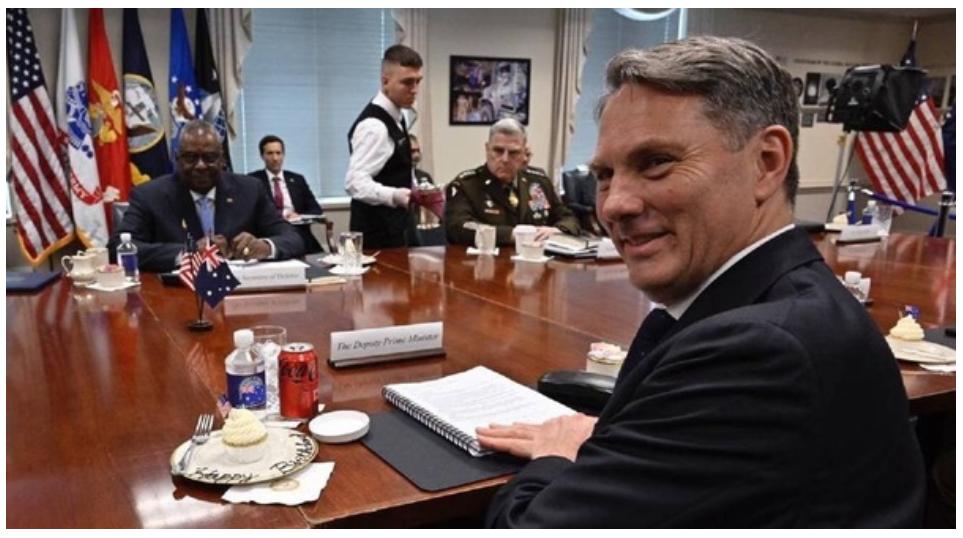
Cracking a smile after being given a birthday cupcake and a can of Coca Cola, Defence Minister and Deputy Prime Minister Richard Marles with US Defense Secretary Lloyd Austin and General Mark Milley chairman of the US Joint Chiefs of Staff, July 2022. (Photo: Defence Department)
It is perhaps surprising to see that, in the face of all this, the public’s support for a US war against China is actually persistently dropping.
Those pro-war voices may not have adequately considered that Australians live in a democracy. They could start to acknowledge this by reflecting the public’s view in statements and reporting, and in policy.
The singularly pro-war stance of most mainstream media outlets has not convinced the majority. So we should expect a boost to the fear-mongering, more tales of spy cells, strange cyber hits, media embeds with military forces, smiling US Generals, new ‘cool
’ attack warplanes, a rise in the US cultural push, and more empathy-building stories of nice Americans surviving terrible storms in Texas.
A recent news media special
, published by Nine/SMH-Age, titled ‘Red Alert’ is an example of the biased reporting. The series would have been better titled ‘Red Scare’.
The large three-day special report relies on five ‘experts’, but the article fails to say four of them are connected to a highly controversial think tank, Australian Strategic Policy Institute (ASPI
), as staff, board member or contributor. Nowhere are the pro-war stance, foreign government funding, and weapons industry connections
of ASPI mentioned.

The alarmist ‘Red Alert’ reports in the Sydney Morning Herald and The Age on 7 March 2023 gave an increasingly common biased ‘red scare’ line that is driving many readers to more independent media carrying a range of views, such as Declassified Australia, Pearls and Irritations, and Michael West Media.
Despite such media abuse, the public remains consistently opposed to US wars. The inability of the mainstream media to convince the majority is in fact driving their readers and viewers away. And they are heading to the internet and serious independent
media sites for a more balanced perspective
.
The danger in a kind heart
There are other messages that the majority of Australians can take away from the Lowy polling.
While the majority of Australians oppose war, they overwhelmingly support the use of Australian military forces for humanitarian operations, and in peacemaking and peacekeeping roles. Between 75 and 80% of Australians expressed support
for such military operations in the 2019 and 2022 polls.
But there is danger here. Those pushing us to war may be guided by this polling result and therefore dress up their arguments in words about ‘humanitarian war’ and ‘peacekeeping’. The overwhelming public goodwill towards the peacekeeping and humanitarian missions to assist the people of East Timor (1999-2007) and Bougainville (1998-2004), is open to being abused by the pro-war lobby.
The public should be on the lookout for pro-war voices using humanitarian justifications to advocate for Australia to join the US in their next war against China, as the Lowy poll put it, ‘to stop a government from committing genocide and killing large numbers of its own people’.
The pro-war voices may have an increasingly difficult task, however, as they face being washed away by a generational tsunami. Polling shows that support for the United States is lowest, and declining, amongst young Australians. This is an amazing ‘fact on the ground’.
While 43% of people aged over 45 say Australia should remain neutral in a military conflict between the US and China, a whopping 60% of Australians aged 18-44 prefer neutrality, according
to the Lowy’s 2022 polls. [Fig: 1, text]
We can expect the pro-war voices to increasingly target younger audiences.
Pushing the polling
“Australia’s new government will find support [in the polling results] for more defence spending, tough policies towards China and Russia, and stronger engagement in our region and on the world stage,” claims
the Lowy Institute.
However what it won’t find is a high level of support for US wars, including against China.
The Lowy Institute polling is an important measure of Australian opinion towards the United States. It is watched closely by foreign affairs and defence officials in Canberra, and in Washington.
The polling each year contains a grab-bag of information, with something for everyone. The actual results showing a drift from the US alliance and a favouring of neutrality, have been de-emphasised in much of the news reporting which has been dominated by the war in Ukraine and the fanning of a war with China.
The particular poll results preferred by the pro-war lobby will be wheeled out, and will be so-gleefully repeated in much of the media. But this present examination of the polling results show there is a hopeful message to be had in the actual attitudes of Australian, if only we are told of them.
Peter Cronau
Douglas Macgregor: “Ukraine IS FALLING, THIS IS IT!” in Exclusive Interview
https://youtu.be/lfUU8981v80
Whats life like in China compared to Western countries?
Trust me it’s like going to 2050 if you lived in a US City and are moving to Shanghai or Hangzhou

There is ALMOST NO PAPER anywhere
Everything is QR Code, QR Code and QR Code
Everything is Digital
You want to book a train ticket?

It’s Digital all the way into the Train Station and into the Coach. You walk to a machine and get your paper ticket by scanning the QR Code but even that’s becoming obsolete
Most Young Gen Z simply scan their QR Codes and enter directly bypassing the paper ticket
Movie Ticket?
QR Codes all the way
Taxi?

QR Codes all the way
Banking?
These guys have an App where you can literally issue Electronic Cheques with QR Code
If you pay in paper money, they glance at you in a strange manner. Every payment is Digital.
Doctors Office?
Again Digital.
Your Insurance Profile has a QR Code. Just Scan it and that’s all it takes.
- Visitation – 90 Yuan
- State Insurance – 52 Yuan
- Employers Insurance – 38 Yuan
- You pay – NOTHING
Just walk in meet the Doctor and come
The Doctor will use your QR Code to order medicines which you collect by scanning your QR Code
It’s like a Land of the Future literally
Even India is moving there and has more digital stuff than a US City today
I now asked a question – What if your Smartphone runs out of Charge? What is you lose your smartphone?
No Problems
They have Online Backup and using a username and password you can change your registered mobile number in exactly 60 seconds
Sadly India doesn’t have this facility and we struggle to get things corrected
The only small flaw I noticed was
MANY OF THEM STILL GO TO FOOT REFLEXOLOGISTS AND ACCUPUNTURISTS for Medical Health
Even People in their 40s prefer going to a Foot Reflexologist Or Accupunturist and getting their foot poked with sticks or needles as a cure for many ills
I am serious
Unlike India where most of these practitioners are regarded quacks, in China they are deemed eminently respectable and have huge crowds
There is some mind magic at work because many people actually claim it works wonderfully
The Guy who showed us homes said his mother had gallstones cured by foot reflexology. I hope to God the woman doesn’t think poking your feet can cure Gallstones
Nonetheless this is a part of Culture there and it’s the only blip I found in an otherwise futuristic city
BRICS to surpass G7 in share of global economic growth
.
Members of the BRICS group – Brazil, Russia, India, China, and South Africa – are expected to outpace the US-led G7 in terms of their contribution to the world’s economic growth, from this year, Bloomberg reported on Monday.
According to the outlet’s calculations – based on the latest IMF data –the BRICS countries will contribute 32.1% of the world’s growth, compared to the G7’s 29.9%.
The Group of Seven nations (G7) – consisting of the US, UK, Canada, France, Germany, Italy, and Japan – has long been considered the most advanced economic bloc of countries on the planet. Russia was a member, until 2014, when it was expelled due to the fallout from the Western-backed Maidan coup in Ukraine.
The report indicated that in 2020, the contributions from BRICS countries and the G7 to global economic growth were equal. Since then the performance of the Western-led bloc has been declining. By 2028, the G7’s contribution to the world economy is predicted to decrease to 27.8%, while the BRICS will account for 35%.
Bloomberg calculations show that China will be the top contributor to global growth over the next five years, with its share set to be double that of the US. China’s share of global GDP expansion is expected to represent 22.6% of total world growth by 2028, the outlet wrote. India is projected to contribute 12.9% of global GDP.
“In total, 75% of global growth is expected to be concentrated in 20 countries and over half in the top four: China, India, the US and Indonesia. While Group of Seven countries will comprise a smaller share, Germany, Japan, the United Kingdom and France are seen among the top 10 contributors,” the outlet wrote.
A recent study by a UK-based macroeconomics research firm has also found that the gap between the two groups in terms of global economic weight is expected to continue to grow. The analysts noted that China and India have been experiencing robust economic growth, and more countries are interested in joining BRICS.
Earlier this year, Russian Foreign Minister Sergey Lavrov said that “more than a dozen” nations have expressed interest in joining BRICS, including Algeria, Argentina, Bahrain, Bangladesh, Indonesia, Iran, Egypt, Mexico, Nigeria, Pakistan, Sudan, Syria, Türkiye, the United Arab Emirates, and Venezuela. Saudi Arabia, Egypt, and Bangladesh have acquired equity in the New Development Bank, the funding organization of BRICS.
Last year, BRICS countries proposed the creation of their own currency in order to move away from the US dollar and the euro in mutual transactions.
HAL TURNER ANALYSIS
This fact – CREATION OF THEIR OWN CURRENCY – is the single greatest problem for the USA because it will render US “economic sanctions” utterly useless. Countries around the world won’t need to comply with US Sanctions because they will have another reliable currency to utilize in place of the dollar.
This is taking place because the US government has abused countries all over the world, for decades, with economic sanctions, and the world has grown tired of our meddling in their affairs.
As country after country changes from using the US dollar to using other currencies, all the “Dollars” presently held in foreign central banks, will come flooding back to America. This will cause the value of the US Dollar to plummet against foreign currencies.
As the value of the US Dollar plummets, it will cost more and more and more for Americans to buy goods; especially since the US does not manufacture many things anymore. The inflation that Americans will suffer will be reminiscent of the Weimar Republic.
All this, because our US government refuses to stop meddling in the affairs of other countries with economic sanctions. The rest of the world is now telling us to stick our Dollars where the sun doesn’t shine. In the end, it is AMERICANS who will suffer the most through hyper-inflation, which will literally break the country.
“The whole world hates America”- Turkey says and America using Europe as a pawn
Filipinos Told “Leave Taiwan” – Return to Philippines
Today I received an email from a Filipino source who has family working in Taiwan. The Philippines are telling anyone from that country working in Taiwan to “Leave Taiwan and return home immediately; war is developing.”
I also got a SECOND email today from another source who told me:
.
Russia Launches at least SIX Akula Fast-Attack Subs into Pacific
Within the past 72 Hours, Russia sortied at least SIX (6) nuclear-powered “Akula” and other model fast-attack submarines into the Pacific Ocean. It is now believed they are enroute to the U.S. west coast.
The Russian Ministry of Defense even published an official video showing the vessels all leaving port at the same time:
Clearly visible are several Akula-class and even one ultra-modern YASEN-class ballistic missile submarines.
The YASEN-class are cruise missile subs that are designed to attack Carrier Battle Groups and can destroy hostile ballistic missile submarines, attack submarines, and ships. They can also be land-attack submarines.
To strike enemy Carriers, the YASEN’s carry the (3M55) “Onik” missiles with a range of 320 nautical miles or 592.64km. In their land-attack role, the submarines carry the (3M14K) “Kalibr” cruise missile with a range of 1600 nautical miles or 2963.2km.
Each YASEN has eight (8) (CM-346) complex (3p-14B) vertical launch tubes that can fire either Onik or Kalibr missiles, and can launch either surfaced or submerged.
The upgraded YASEN-M can also fire the hypersonic “Zircon” missile at either ships or land targets.
According to Michael Peterson of the Russia Maritime Studies Institute, for the first time in its history, Russia can now lay off the coasts of either Europe or even the United States, and present a persistent land-attack threat with very highly precise weapons.
This new ability concerns NATO leaders as a threat to physical infrastructure such as ports which would be critical during wartime.
A 2009 report by the U.S. Office of Naval Intelligence (ONI) says the YASEN is “the quietist of Russian-made submarines.”
Moscow has “significantly modernized its submarine force in recent years,” with 11 nuclear-powered ballistic missile submarines and 17 nuclear-powered attack submarines. By this data count, Russia also has nine nuclear-powered cruise missile submarines and 21 diesel-electric attack submarines.
The fact that all these submarines are now in the Pacific Ocean and heading toward the US west coast OUGHT TO BE a signal to the US to knock off its interference in the Russia-Ukraine situation. Sadly, it appears no one in the US is listening or even looking for messages from Russia.
It seems the US will only acknowledge the cost of our meddling in Ukraine when bright, white, flashes start appearing over US cities from Russian submarines and ICBM’s.



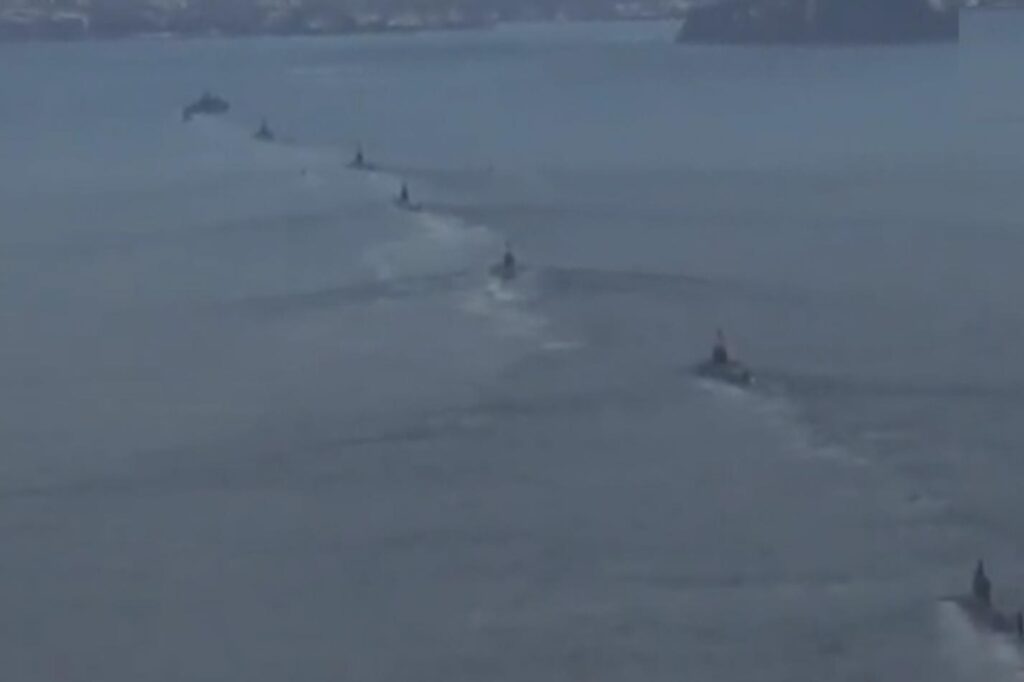
Those paper back titles were pretty funny. The Russian subs headed for the west coast? Not so mucho. Yikes!